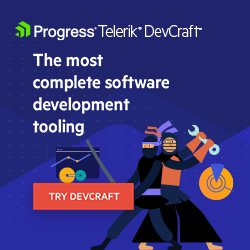I Can’t Get No Satisfunction

User experience isn’t just the shiny stuff. It needs to provide an experience that works really well—and that keeps getting better.
Mick Jagger already screamed it in one of the most legendary rock songs of all time:
When I’m driving in my car
When a man comes on the radio
He’s telling me more and more
About some useless information
Supposed to fire my imagination
A protest against consumerism. Against the constant pressure to want more. More flair, more sparkle, more everything—but rarely better.
And honestly? He might as well have been talking about user experience.
Because UX too often focuses on the shiny stuff: visuals, delight, emotional connection, joy. As if satisfaction is just a feeling you can trigger with animations, sound effects and dopamine tactics.
But if you work with enterprise software every day, you know: that’s not how it works.
Dissonance
Most UX theories you’ll find online are built around B2C use cases. Worlds where users are mainly customers, and satisfaction hinges on how an app makes you feel.
Animations. Little hearts that pop when you like something. Confetti when something succeeds—you know the drill.
That kind of delight works in consumer apps. And let’s be fair—it feels great.
But enterprise software is a different story.
These users don’t want confetti. They want their tool to start faster than it did yesterday. To get their job done with fewer clicks. To not crash when five windows are open.
These are people who spend hours a day in your product. They’re trained. They’re in a hurry. They have a goal.
A job to be done.
And yet, enterprise UX is still too often designed through a consumer lens. That’s where the friction starts. Because, while the literature keeps talking about “joyful experiences” and “emotional connection,” the moments that actually add value are often pragmatic—sometimes even boring:
- An error message that clearly tells you what to do.
- A workflow that finally makes sense.
- A search function that … just finds stuff.
What we need is a new definition of satisfaction. One that doesn’t get stuck in delight as a feeling, but instead looks at a sense of control and progress. At the moment when everything just works.
When it functions.
Satisfunction.
So don’t sprinkle glitter. Delight is fine—but only when it supports flow, not interrupts it.
Only when it makes something faster, more reliable or simpler. Then you’ve got a truly satisfied user.
Resonance
That doesn’t mean the visual aspect is worthless. Far from it.
Good design resonates—it makes an interface understandable, pleasant, predictable. It gives structure. It brings clarity.
Visuals, animation, typography: they guide behavior. They make software more human. A UI can bring calm into a chaotic workday. Can make a complex task less overwhelming. Can even … be enjoyable.
And yes—that is genuinely valuable.
So, no, visuals aren’t a luxury. They’re an essential tool for orientation, clarity and trust. As long as they’re not there to cover up what’s broken—but to emphasize what’s right.
Harmony
When you balance it all, when you prioritize satisfunction, you create space. Space for emotion. For feeling. For real satisfaction.
Because a person spends hours behind a screen. Using the tools you design as part of their day-to-day life means your design directly impacts how someone feels—at work, and at home.
So don’t make it all strictly business. Don’t make it just dry and functional. Don’t lose the human touch.
In my career, I’ve often seen friction between researchers, UX designers, visual designers and marketers. Each with their own perspective on what the “right experience” should be.
The solution?
Harmony.
Compose. Design software that has space for every voice. Feel when it’s time to design for emotion—and when it’s time for function. And learn how to make them sing together.
Outro
So, the next time you design something, don’t just ask if it’s “beautiful.”
Ask if it works. Ask if it makes sense. And maybe, just maybe …
It’ll feel pretty good too.

Teon Beijl
Teon Beijl is a business designer and founder of Gears & Ratio, with over a decade of experience in enterprise software for the oil and gas industry. Formerly Global Design Lead for reservoir modeling, remote operations and optimization software at Baker Hughes, he now helps organizations deliver high-quality user experiences for industrial products through knowledge sharing, design leadership and implementing scalable design systems. Connect with Teon on LinkedIn or Substack.

